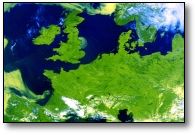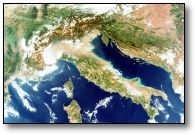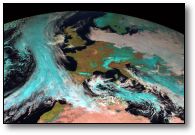| |
|
Reception...
An introduction to receiving imagery.
|
Polar
APT
Most members start by receiving images from
the `Polar orbiting satellites', which transmit Automatic
Picture Transmission (APT) signals in the 137MHz band. Current
satellites include the American NOAA series and Russian Meteor
or Sich series. These tend to be sun-synchronous, with two
orbits passing at or near overhead at the same times each
day, 12 hours apart. APT resolution is about 4km per pixel
and two channels are usually transmitted, Visible and Infra
Red. |
 |
| The 137MHz band is
a fairly easy band in which to build your own equipment and
is relatively inexpensive as a band to start with. Provided
you own a PC then it is possible to get started receiving APT
signals for a little as Receiver and antenna, by using shareware to decode the signal
and
using the power of your computer sound card. |
|
High
Resolution Picture Transmissions (HRPT and CHRPT)
For the really keen and requiring either
more experience in construction or a bit more savings, there
are the highest resolution images available, namely HRPT or
CHRPT. These transmission are from the Polar Orbitting satellites,
about 1.7 GHz, and comprise either 5 (HRPT) or 10 channels
(Chinese HRPT) of spectral information, giving resolution
down to 1.1km pixels. It is necessary to track the satellite
with your antenna and image files can be as large as 120MB. |
 |
| The equipment is
more specialised and due to the high frequencies and data rates
involved, HRPT is more for the experienced amateur. |
|
Meteosat
second Generation (MSG)
Meteosat Second Generation (MSG) consists
of a series of four geostationary meteorological satellites,
along with ground-based infrastructure, that will operate
consecutively until 2020. The MSG satellites carry an
impressive pair of instruments, the Spinning Enhanced
Visible and InfraRed Imager (SEVIRI), which has the capacity
to observe the Earth in 12 spectral channels and provide
image data which is core to operational forecasting needs,
and the Geostationary Earth Radiation Budget (GERB)
instrument supporting climate studies.
|
 |
Eumetsat is relaying the signal via Hotbird and this
can be received using a receiver
card. This is a digital satellite TV 'free to air' satellite
receiver that is installed inside your computer.
Please see the article on the MSG page
for more details. |
|
|